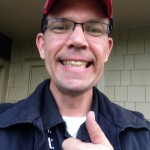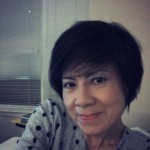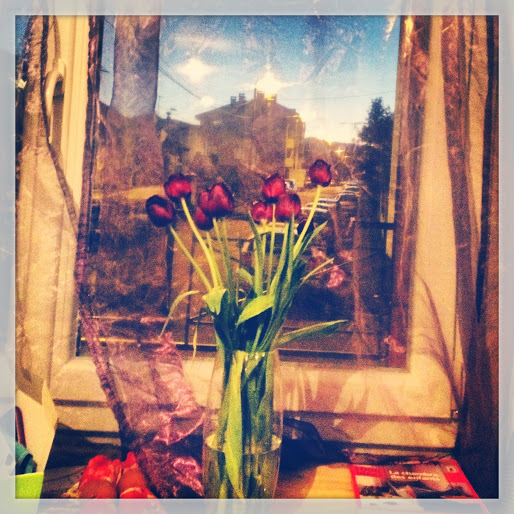by Joanna Joseph Jeyaraj, Malaysia
When I was first asked to contribute to this blog all I could think of was how I did not have a story of inspiration. Instead, my story is one of struggle and despair. However, as I think about all the challenges I am facing as a new academic, I am beginning to see that amidst these struggles, lies immense opportunity – and that I should be transforming these challenges into productive pathways.
I teach in a university in Malaysia and started about six months ago, eager and excited to begin my career in academia. Before coming here, I lived in New Zealand, where I pursued my doctoral studies in higher education. My research focused on English language teachers in higher education who used critical pedagogy in their teaching. As you may know, critical pedagogy is generally attributed to the ideas of Paulo Freire and has a strong agenda for social change and justice through the development of active and engaged citizens (Freire, 2005; McArthur, 2010; Crookes, 2013). Thus, having read the scholarship in this area, I came to strongly believe that education should bring forth societal reform and that my role as a teacher is to nurture intellectual development as well as social activism among students. My research explored the experiences of critical pedagogues from different parts of the world who sought to transform society through language education. After listening to numerous stories of how these teachers strove to make a difference in students’ lives and the communities that students lived in, I was inspired and motivated to do the same in my own teaching.
Instead, my eagerness and perhaps naiveté was quickly replaced with frustration because I felt restricted in the higher education environment that I had entered. Viewed from the perspectives of critical pedagogy, many things in the new system seemed to make education less meaningful and purposeful. The first big challenge was teaching a course that was so focussed on assessments; it seemed to take out the joy of the whole learning process for students. Students were piled with assignments and exams, and teachers were mostly required to prepare students for these various assessments. After a few weeks wallowing in self-pity, I decided to contemplate and reflect on what I could learn from teaching in this environment. I believed that I could turn my struggles into a learning experience for students, and find answers and solutions to their problems. So, here are just a few of my thoughts and observations that teachers in similar situations may find useful:
1. To “do” critical pedagogy, you have to struggle. Freire struggled. In the process, he was accused of being subversive and subsequently jailed and exiled. Although my struggles are not as extreme as Freire’s, still critical pedagogy is all about facing resistance. Sometimes, it comes in the form of facing opposition from the institution that one is in, or even from other colleagues or students. The path is not an easy one, and if I want to take the critical pedagogy route, I should be prepared to persevere and keep on fighting to create a legitimate space for critical pedagogy.
2. In many educational systems around the world, creativity and autonomy are destroyed in the name of ‘consistency’ and ‘standardisation’. To ensure teachers mark fairly and consistently, certain standardized processes are put in place. For instance, although I had worked with my students over 9 weeks on their research topics, their reports as a rule are marked by a different teacher. This allowed no flexibility and I found myself wanting to stick strictly to the prescribed syllabus as it is expected of all teachers. There were times when I felt stifled and constrained, because having to focus almost exclusively on preparing students for their assignments and exams often clashed with my pedagogical values as a teacher.
However, there came a point of realisation that helped me feel less powerless against a system that limited my students’ and my own creativity. I remembered the words of a TESOL teacher educator whom I had interviewed for my research project on critical pedagogy. Although our interview took place some years back when I was still a graduate student, his words could not have rang truer as they do right now. He told me that he constantly reminded his students: ‘… no matter how many constraints there are, you have to find ways to subvert the system … you are trailblazers in this area’. I was keenly aware that the structure of the course I was teaching differed greatly from a typical critical pedagogy class which Shor (1987) mentions is dialogic, creative and invented in-progress. I realised that learning was not student-driven and knowledge was not negotiated and co-constructed between the teacher and the student. When knowledge is jointly created, students have the right to co-develop and evaluate the syllabus (Shor, 1993). Instead autonomy was restricted because students were assigned research topics and many were given strict instructions on how their research topics should be interpreted. And yet, I started realising that if I tried, I could find small ways of engaging students in critical discourse, motivating them about the content of the curriculum and helping them master the skills to be successful within the current system.
3. Oral feedback is just as important as written feedback, and it should be provided by the person who has marked the assignment. One problem I found was justifying another teacher’s marks to my students. Many came to me and asked why they were given a particular grade, and I noticed myself saying ‘Maybe the marker thought…’, or ‘I think the marker did this because…’. There were some rare occasions when I could not understand why students were marked down, especially for things that were not specified in the marking criteria. I understand that in mass-higher education, managers put certain systems in place to maintain standards – but at times, good intentions become an obstacle to learning. Perhaps another alternative would be to have a moderation system – where teachers grade their own students, but another teacher moderates to ensure consistency.
4. Whatever the intentions may be, technologies like ‘SafeAssign’ (a text-matching detection tool) and stringent ‘plagiarism’ policies too often frighten and intimidate students. My students are right out of high school – some in their second semester of university while others in their first. Throughout primary and secondary school, students mostly write guided and creative essays. The world of academic writing is something new that they encounter only at university. From conversations with students, I learnt that they were neither taught nor encouraged to paraphrase in high school. Instead, most teachers would tell students to copy or memorise ‘model’ essays and phrases for examination purposes. These conversations brought back memories of when I first started teaching. I encountered students who would blatantly copy chunks of text and not bother paraphrasing or citing sources. I initially became very frustrated and thought students were deliberately being lazy. But after talking to my students, I was told that this is how they had been taught to write. Many students, especially those who studied in Chinese vernacular schools were often asked to copy ‘good’ pieces of writing. To alter the words of another writer was deemed inappropriate – it would not be acceptable to change the words of the original writer who is perceived as being the knowledge source and expert on the subject. However, upon entering university, students are expected to unlearn the way of writing learnt in primary and secondary school. Many students find this challenging, especially because they have not been taught the necessary skills. In university, students are suddenly confronted with the big ‘plagiarism’ word and there is suddenly so much distrust. For the subject I teach, almost everything (except for mid and final exams) is SafeAssigned – questionnaires that students send out to respondents, PowerPoint presentations and even speech outlines. Most students are so petrified that they would be called in for a plagiarism hearing and be penalised and many attempt to change important keywords and generic phrases just to avoid text matching. Oddly enough, one of the reasons why I think there is a high SafeAssign text matching rate is because of the very structure of the course. Research topics are recycled year after year and student intakes are large each semester. While there is no easy solution, perhaps new topics should be introduced or students should be given the freedom to choose their own topics. I believe that giving students the option to choose their own topics will empower and enable them to develop their own ideas and voice.
It is my first time teaching this subject and maybe these struggles are just part of the difficulties that beginner teachers face. For now, I plan to turn my challenges into opportunities. Hopefully, I will continue to find ways to engage and empower students in spite of the challenges. I may not have answers and solutions to all or even most of my challenges, but I will use the perspectives and inspiration of critical pedagogy to keep striving for a more equal playing field for all involved and make teaching and learning more connected, purposeful and relevant to students’ lives.
About the Author Joanna Joseph Jeyaraj currently works and lives in Sarawak, land of the hornbills. She is interested in researching critical pedagogies in English language teaching and is eager to make connections and collaborate with others who have similar interests.
References
Crookes, G. (2013). Critical ELT in action : Foundations, promises, praxis Retrieved fromhttp://otago.eblib.com.au/patron/FullRecord.aspx?p=1157739
Freire, P. (2005). Pedagogy of the oppressed. New York: Continuum
McArthur, J. (2010). Achieving social justice within and through higher education: The challenge for critical pedagogy. Teaching in Higher Education, 15(5), 493-504.
Shor, I. (1987). A pedagogy for liberation: Dialogues on transforming education Basingstoke, Hampshire: Macmillan.
Shor, I. (1993). Education is politics : Paulo Freire’s critical pedagogy. In P. McLaren & P. Leonard (Eds.), Paulo Freire: a critical encounter. New York: Routledge


